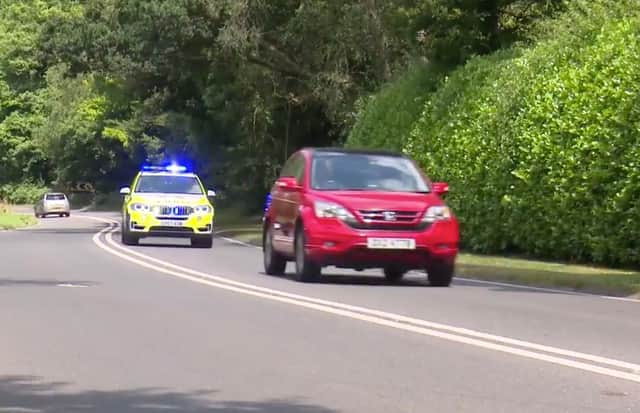This is when you shouldn’t let an emergency vehicle overtake


As drivers, most of our first reactions when seeing blue lights behind us is to try to get out of the way as quickly as possible.
The last thing we want is to hold up an ambulance, fire engine or police car on its way to an emergency call. However, in certain situations it can be tricky to know the best action to take, such as when you’re on a single carriageway road with solid double white lines down the centre. Should you slow down, pull over or speed up?
Advertisement
Hide AdAdvertisement
Hide AdA new viral video clip has provided a definitive answer and it turns out the best action is not to try to let the emergency vehicle overtake immediately.
Double white lines signify a stretch of road where it is unsuitable to overtake and that applies just as much to emergency vehicles as to the rest of us. If you are being followed along such a stretch by an emergency vehicle its driver will probably switch off their siren to indicate they are not going to try to pass. You should drive at the speed limit (as long as it is safe to do so) until you’re clear of the double white lines. At that point, the emergency vehicle will reactivate its siren, signalling that you should allow it to pass.
The video is one of a series of clips created by GEM Motoring Assist in collaboration with emergency services to advise drivers on how to respond to emergency vehicles in a variety of situations. Other clips in the Blue Light Aware campaign cover creating “emergency corridors” on motorways and giving space to blue light vehicles stopped in live traffic lanes.
GEM chief executive Neil Worth commented: “The research we conducted before publishing the new clips told us that solid white line systems were one of the main causes of confusion, along with traffic light junctions and roundabouts.
Advertisement
Hide AdAdvertisement
Hide Ad“Having such a large number of people taking the time to watch this clip must be good news for road safety. By fostering a better understanding of the rules of the road, and how an emergency driver wants us to assist, we are playing our part in reducing risk, minimising delay and perhaps even saving a life.
“We are very proud of Blue Light Aware, which we first launched in 2011 and updated in 2020. Our priority in the process of revising the resource last year was t make it more social media friendly. The excellent results from the past few days suggest that we have been successful in that regard.”